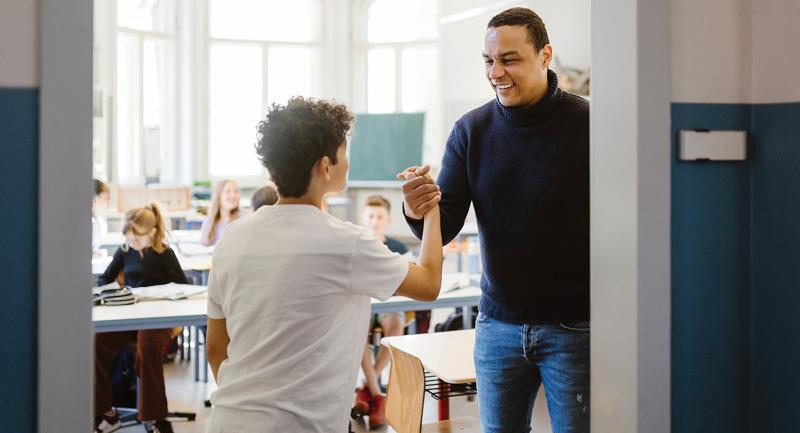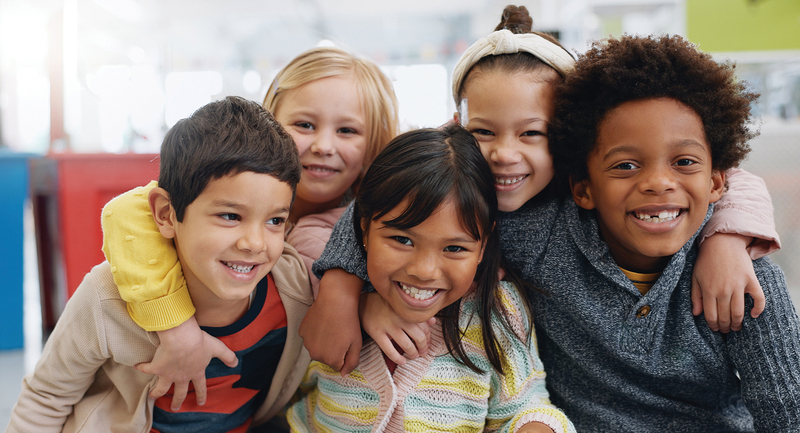Since I began counseling students a decade ago, I have witnessed their needs and feelings grow increasingly complex. Assisting students to become aware of their emotions, understand how to regulate their reactions, and comprehend the art of making decisions is a daily aspect of my job (CASEL, 2017). By incorporating social-emotional learning (SEL) into our curriculum and working collaboratively with all stakeholders in our students' lives, whether they be parents, school leaders and staff, or other students, we create an environment that allows students to reach their full academic and career potential (ASCA, 2014). Students are often sent to my office to process an inappropriate reaction they've had to a situation in class. For example, a teacher once asked a student to take out his earbuds to listen to instructions, and the student reacted by spewing profanities at the teacher. One on one, I helped the student process what occurred and listed strategies that would hopefully assist this child in avoiding a similar outcome in the future. But wouldn't it be great if the teacher could have avoided this situation altogether?
In another instance, a senior came into my office hysterical over a denial from an Ivy League college, reiterating how every decision she made in high school was in preparation for an acceptance letter. Although I explained how competitive such schools are and congratulated her on many other accomplishments, the student's devastation could have been lessened through a comprehensive social-emotional curriculum.
Both these instances prove that strong emotional reactions require SEL, not just support from teachers and staff. Every day, teachers and staff address social media mishaps, help students navigate the emotional turbulence of their teenage years, or assist with basic needs, such as housing or meals. While teachers can see if I'm available to talk to a student, my workdays are typically busy with scheduled appointments and other responsibilities that I must respect. A thoughtful response to a student's emotional concerns is often a bigger job than support staff are equipped for, and we need to give all students the time and attention they deserve.
To address students' varied needs, a school can seamlessly incorporate SEL through individual discussions, small-group instruction, advisory lessons, or alignment and integration with the core curricula.
Work SEL Into a Curriculum
By collaborating with teachers, I develop and deliver developmental-guidance lessons to better support students in class. Using an informal needs assessment, I can evaluate where a student is emotionally and developmentally. I've conducted these assessments by sending the student a short Google Form, eliciting feedback from the teacher via email, or by holding brief hallway conversations with students for surface-level check-ins. From there, I create talking points and an appropriate minilesson based on what the student is struggling with. Once developed, lessons can be cofacilitated with the teacher, conducted in small groups by support staff, or used to help teachers develop a social-emotional lens to recognize teachable moments in class.
The topics of these lessons run the gamut from abusive relationships to study skills to online safety and awareness. A school that is just beginning to implement SEL might consider lessons about classroom behaviors and management or those aligned with curriculum on sensitive topics that may trigger emotional reactions among students. A class on current events or sociology, which may cover topics such as race or social class, can include a social-emotional component regarding self-awareness and self-management.
Teachers can also conduct lessons that proactively address and teach the skills that help with emotional regulation and decision making, perhaps through an advisory program or developmental guidance lessons that address goal setting, problem solving, or self-awareness (ASCA, 2014). While this approach exposes all students to necessary skill sets, students need purposeful opportunities to explore and practice these skills to truly ingrain them and transfer them to other classes and all aspects of their lives (DePaoli, Atwell, & Bridgeland, 2017). For example, lessons on social awareness will assist students when interacting with their peers, managing their social media accounts, and understanding their strengths for job interviews. Instructional Practice and Support
Teachers may resist incorporating SEL because it may feel like one more task on their plate. However, helping teachers understand how SEL can support them in the classroom often shifts their outlook and builds staff morale. For example, working with Advanced Placement teachers on test anxiety may ultimately improve scores. Working with 9th grade students on decision making and forging positive relationships may encourage students to seek out adults in times of crisis, rather than resorting to tantrums and emotional outbursts.
The Positive Effects of SEL
The effects of SEL are best measured through anecdotal evidence shared by staff and students. More formally, students can complete projects, tasks, or portfolios to show they have mastered social-emotional competencies. For example, students might create a visual map showing how they would respond to challenging hypothetical scenarios or develop with a goal-setting chart. These skills can improve academic success (Rikoon, Brenneman, & Petway, 2016). Ultimately, true integration of a social-emotional curricula is apparent through improved disciplinary rates and student retention and promotion (DePaoli, Atwell, & Bridgeland, 2017). With the right tools, students can develop healthy relationships with both their classmates and teachers. By collaborating with the teachers in my school, I have been able to watch students build skills that will serve them well—not only in the current school year, but also in the future as they seek postsecondary options and careers.







